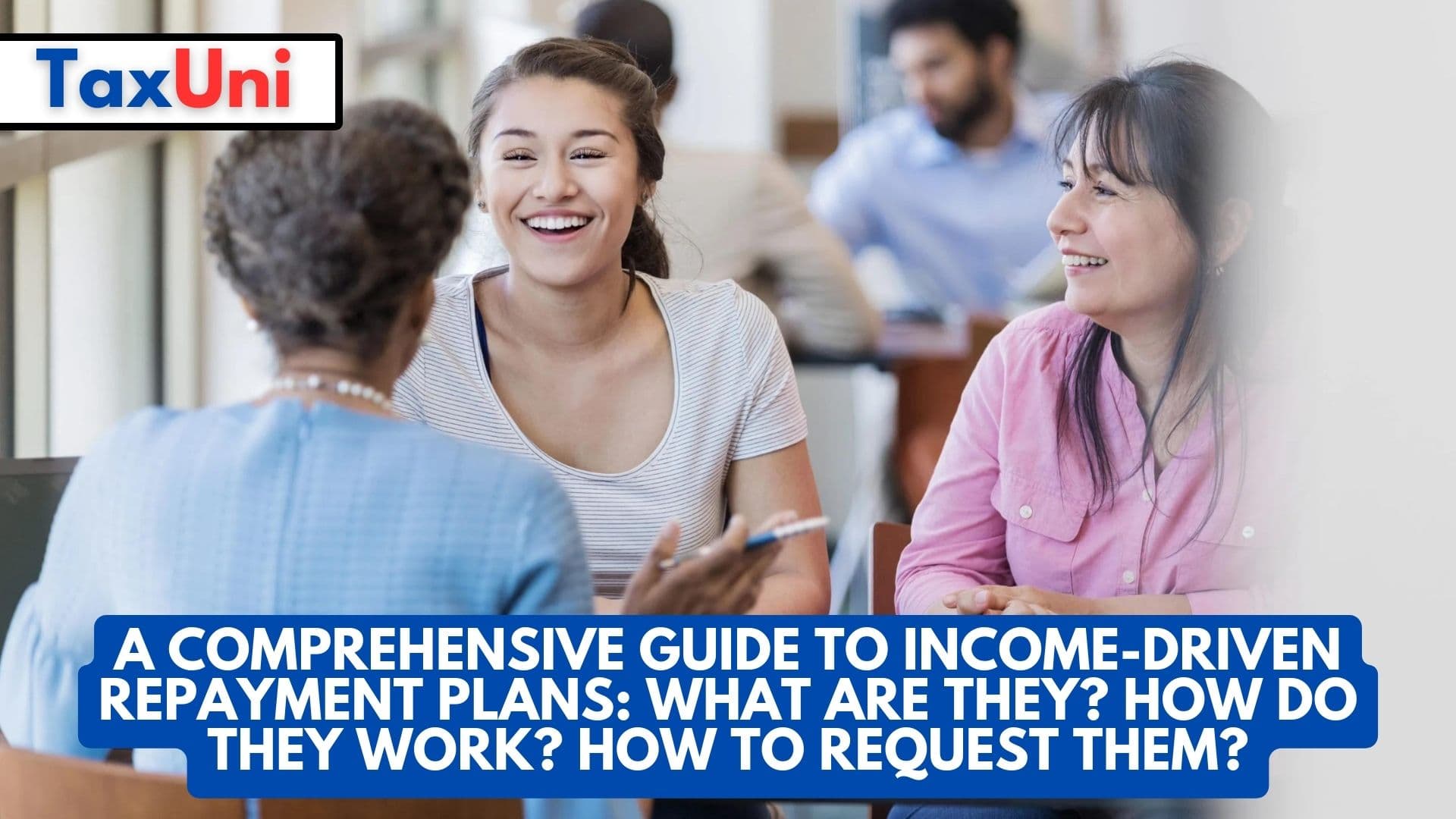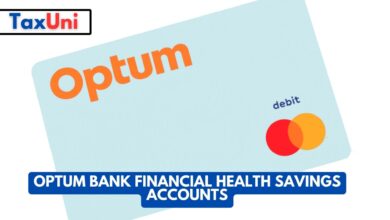A Comprehensive Guide to Income-Driven Repayment Plans: What Are They? How Do They Work? How to Request Them?
Paying off student loans can be daunting, especially if you have significant debt. Fortunately, income-driven repayment plans can offer a solution. This article will dive deeper into income-driven repayment plans, how they work, who is eligible, and how to apply. We'll also explore the advantages and disadvantages of income-driven repayment plans to help you make an informed decision about your student loan repayment strategy.

Contents
- Who is eligible for Income-Driven Repayment Plans?
- How Does an Income-Driven Repayment Plan Work?
- Income-driven Repayment Plans Request
- Advantages of income-driven repayment plans
- Disadvantages of income-driven repayment plans
- FAQs
- What is the difference between income-driven repayment plans and standard repayment plans?
- How often do I need to recertify my income for income-driven repayment plans?
- Can I switch between income-driven repayment plans?
- Can I use income-driven repayment plans for private student loans?
- Will my monthly payment under an income-driven repayment plan increase if my income increases?
- Will income-driven repayment plans affect my credit score?
An income-driven repayment plan is a type of repayment plan available for federal student loans. Under this plan, your monthly payments are based on your income and family size. This means that your monthly payments will be lower if you have a lower income or a larger family size. Your payments will be higher if you have a higher income or a smaller family size. Income-driven repayment plans are designed to make student loan payments more manageable for struggling borrowers.
Enrolling in an income-driven repayment plan can offer significant benefits for federal student loan borrowers, including lower monthly payments and the potential for loan forgiveness. However, it’s essential to carefully consider the advantages and disadvantages of income-driven repayment plans and evaluate your financial situation before making a decision. Additionally, it’s important to keep in mind that income-driven repayment plans may result in paying more interest over the life of the loan due to the longer repayment period. In the following sections, we’ll explore how income-driven repayment plans work, how to apply for them, and the different types of plans available. We’ll also discuss the potential downsides of income-driven repayment plans and provide tips to help you decide if an income-driven repayment plan is right for you.

Who is eligible for Income-Driven Repayment Plans?
Most federal student loan borrowers are eligible for at least one income-driven repayment plan. The specific eligibility requirements may vary depending on the plan, but generally, to be eligible for income-driven repayment plans, you must meet the following criteria:
- Have federal student loans: Only federal student loans, such as Direct Loans, Stafford Loans, and Grad PLUS Loans, are eligible for income-driven repayment plans. Private student loans are not eligible.
- Demonstrate financial need: To enroll in Income-Based Repayment (IBR), Income-Contingent Repayment (ICR), or Pay As You Earn (PAYE) plans, you must demonstrate financial need based on your income and family size.
- Not be in default: You must be current on your federal student loan payments and not be in default to enroll in an income-driven repayment plan.
- Meet the plan-specific requirements: Each income-driven repayment plan has its own eligibility requirements. For example, Revised Pay As You Earn (REPAYE) is available to all Direct Loan borrowers regardless of when the loans were disbursed, while IBR and PAYE are only available to borrowers who took out loans after a certain date.
- Have a partial financial hardship: To enroll in any income-driven repayment plan, you must have a partial financial hardship. This means that your monthly payment under the standard repayment plan must be higher than your monthly payment under the income-driven repayment plan.
Most federal student loan borrowers are eligible for at least one income-driven repayment plan, but specific eligibility requirements may vary depending on the plan. It’s essential to review the eligibility requirements carefully and consult a loan servicer or financial advisor to determine which plan is right for you.
How Does an Income-Driven Repayment Plan Work?
Under an income-driven repayment plan, your monthly payments are based on a percentage of your discretionary income. Your discretionary income is calculated as the difference between your adjusted gross income and 150% of the federal poverty level for your family size and state of residence. The percentage of your discretionary income you will need to pay depends on your specific income-driven repayment plan. There are four different income-driven repayment plans available:
- Income-Based Repayment (IBR) – Any remaining balance will be forgiven if you are a new borrower as of July 1, 2014, and have been making payments under the IBR plan for 20 years. If you are not a new borrower as of July 1, 2014, and have been making payments under the IBR plan for 25 years, any remaining balance will be forgiven.
- Pay As You Earn (PAYE) – If you are a new borrower as of October 1, 2007, and have been making payments under the PAYE plan for 20 years, any remaining balance will be forgiven. If you are not a new borrower as of October 1, 2007, and have been making payments under the PAYE plan for 25 years, any remaining balance will be forgiven.
- Revised Pay As You Earn (REPAYE) – If you have undergraduate loans, any remaining balance will be forgiven after 20 years of payments. If you have graduate loans, any remaining balance will be forgiven after 25 years of payments.
- Income-Contingent Repayment (ICR) – Any remaining balance will be forgiven after 25 years of payments.
It’s important to note that loan forgiveness under income-driven repayment plans is taxable. This means that if your loans are forgiven, you will be responsible for paying income taxes on the forgiven amount. Income-driven repayment plans offer the potential for loan forgiveness after making a certain number of payments. However, it’s essential to understand the specific eligibility criteria and tax implications before pursuing this option. An income-driven repayment plan may be an excellent option if you struggle to repay your student loan.

Income-driven Repayment Plans Request
- Contact your loan servicer. Your loan servicer is the company that manages your federal student loans. You can find your loan servicer’s contact information by logging in to your Federal Student Aid account or by checking your loan documentation.
- Determine which income-driven repayment plan you want to enroll in. There are several income-driven repayment plans available, including Income-Based Repayment (IBR), Pay As You Earn (PAYE), Revised Pay As You Earn (REPAYE), and Income-Contingent Repayment (ICR). Each plan has different eligibility requirements and payment calculations, so do your research to find the right plan.
- Download and complete the Income-Driven Repayment Plan Request Form. You can download the form from the Federal Student Aid website or request a copy from your loan servicer. Make sure to fill out all sections of the form accurately and completely.
- Submit the form to your loan servicer. You can submit the form online through your loan servicer’s website, by mail, or by fax. Follow the instructions provided by your loan servicer to ensure your request is processed correctly.
- Continue making your current monthly payments. You’ll need to continue making your current monthly payments until your loan servicer approves your request and adjusts your payment amount. This process can take several weeks, so don’t stop making payments until you receive confirmation of your new payment amount.
- Recertify your income and family size annually. Once you’re enrolled in an income-driven repayment plan, you’ll need to recertify your income and family size annually to remain eligible. Your loan servicer will notify you when it’s time to recertify, and you’ll need to submit updated income and family size information to determine your new payment amount.
Advantages of income-driven repayment plans
Income-driven repayment plans offer several advantages, including:
- Lower Monthly Payments: Income-driven repayment plans base your monthly payment on a percentage of your discretionary income, which can result in significantly lower payments compared to a standard repayment plan. This can make it easier to manage your monthly budget and free up funds for other expenses.
- Loan Forgiveness: Depending on your income-driven repayment plan, you may be eligible for loan forgiveness after a certain period. For example, if you make payments under PAYE or REPAYE for 20 or 25 years, respectively, any remaining balance on your federal student loans may be forgiven.
- Flexibility: Income-driven repayment plans offer flexibility if your income fluctuates over time. If you experience a decrease in income, your monthly payment can be recalculated to reflect the change, which can help you avoid defaulting on your loans.
- No Prepayment Penalty: Income-driven repayment plans do not have prepayment penalties, which means you can make extra payments to pay off your loans faster without incurring additional fees.
- Multiple Plan Options: There are several income-driven repayment plans to choose from, each with its own eligibility requirements and payment calculation formulas. This means you can choose the plan that best fits your financial situation.
Disadvantages of income-driven repayment plans
While income-driven repayment plans offer several benefits, such as lower monthly payments and the potential for loan forgiveness, there are also some potential downsides to consider.
- Increased Interest: Income-driven repayment plans typically extend the repayment term of your loans, which can result in more interest accruing over time. This means you may end up paying more in interest over the life of your loan than if you had chosen a standard repayment plan.
- Tax Implications: If you receive loan forgiveness under an income-driven repayment plan, the amount forgiven is considered taxable income. This means you may have to pay significant taxes on the forgiven amount.
- Longer Repayment Period: Since income-driven repayment plans extend your repayment period, it may take longer to pay off your loans. This can delay other financial goals, such as saving for a down payment on a home or contributing to retirement accounts.
- Limited Eligibility: Not all types of federal student loans are eligible for income-driven repayment plans. For example, Parent PLUS loans are not eligible for IBR, PAYE, or REPAYE. Private student loans are also not eligible for income-driven repayment plans.
- Risk of Forbearance: If you experience financial hardship and cannot afford your income-driven repayment plan payments, you may be tempted to put your loans into forbearance or deferment. However, this can result in more interest accruing on your loans and may increase your overall debt burden.

FAQs
What is the difference between income-driven repayment plans and standard repayment plans?
Income-driven repayment plans base your monthly payment on your income and family size, while standard repayment plans have a fixed monthly payment amount. Income-driven repayment plans can result in lower monthly payments and the potential for loan forgiveness, while standard repayment plans may have higher monthly payments but can result in paying less interest over the life of the loan.
How often do I need to recertify my income for income-driven repayment plans?
You must recertify your income and family size annually for most income-driven repayment plans. However, if your income changes significantly during the year, you can request a recalculation of your monthly payment.
Can I switch between income-driven repayment plans?
Yes, you can switch between income-driven repayment plans as long as you meet the eligibility requirements for the new plan.
Can I use income-driven repayment plans for private student loans?
No, income-driven repayment plans are only available for federal student loans.
Will my monthly payment under an income-driven repayment plan increase if my income increases?
Yes, your monthly payment under an income-driven repayment plan will increase if your income increases. However, your monthly payment will never exceed the amount you would have paid under the standard repayment plan.
Will income-driven repayment plans affect my credit score?
No, enrolling in an income-driven repayment plan will not directly affect your credit score. However, missing payments or defaulting on your loans can negatively impact your credit score.





